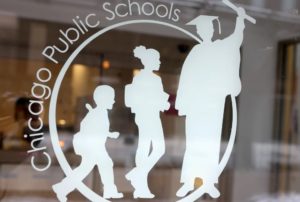‘Its conclusions are meaningless,’ says Catholic school superintendent of Illinois school choice report skewed to make public schools look better
Opponents of school choice in Illinois thought they had a smoking gun after a report showed public school students outscored school choice students in the state.
But the report is now being…

Opponents of school choice in Illinois thought they had a smoking gun after a report showed public school students outscored school choice students in the state.
But the report is now being criticized for skewing data to downplay the benefits of school choice.
Invest in Kids was a tax-credit scholarship program for low-income students to attend a private school.
Despite its 10,000 participating students, thousands more still waitlisted, and the robust support of parents and education reformers, the state’s Democrat-controlled Legislature killed the program at the end of 2023 by refusing to extend it.
Then, in January, a report was released claiming the program wasn’t effective to begin with, concluding public school students scored higher on average than Invest in Kids students who attended private schools.
“Scholarship recipients attained relatively low levels of proficiency in the IAR [Illinois Assessment of Readiness],” the report stated. “In both 2022 and 2023, Illinois public schools had a higher percentage of grades 3-8 students meeting or exceeding expectations in ELA compared to [Invest in Kids] scholarship recipients (in 2022, 30.1 percent to 20.8 percent, and in 2023, 35.4 percent to 22.5 percent respectively).”
So what’s the wrinkle?
School choice students in Illinois weren’t comparable to the average public school student because Invest in Kids was only for low-income families.
While it’s true that scholarship recipients scored lower than the average Illinois public school student, they actually scored much higher than other low-income public school students.
In 2023, state data says the average public school reading score was 35.4%. But the average score for low-income students was much lower, at 20.8%.
But Invest in Kids recipients scored slightly better, at 22.5%.
The results were similar in math.
Average public schoolers scored around 27%, and low-income public students scored just 12.6%.
School choice students scored around 20%.
Again, the same held true for SAT scores.
“About one-third [33%] of high school scholarship recipients were proficient in the SAT in ELA, while about one-quarter [25%] were proficient in math,” the report read.
These results were comparable to the public school averages – 31.6% and 26.7%, respectively.
But choice students far outscored their low-income counterparts, who had just 15% and 11% proficiency in ELA and math.
Additional analysis also indicated that Invest in Kids was really helping low-income students.
“Statewide, when comparing scholarship recipients in Catholic schools to public school students who are eligible for free- and reduced-price lunch, which is a far more appropriate comparison, scholarship students perform higher in both math and reading,” said Greg Richmond, superintendent of the Archdiocese of Chicago Catholic Schools.
“We are disappointed that the methodology of the report is so faulty that its conclusions are meaningless,” Richmond continued. “This report is a disservice to all families and communities in Illinois. We call on the State Board of Education to retract this report and conduct the analysis again in the manner required by State Law: a comparison of low-income students in the Invest in Kids program to low-income students statewide.”
Fortunately for those students who were benefiting from Invest in Kids, Illinois lawmakers are trying to renew the program, which was not only effective, but only cost around $8,000 per students, compared with the more than $20,000 per student spent on public school students.



